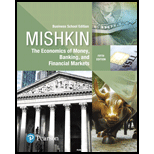
- Even if the economy was not actually in a recession, how the fears of zero lower bounds could justify the policy initiated by the Fed as a move to exit the recession.
- The impact of such policies on the MP curve and the AD/AS graph. The initial conditions in 2003 and the impact of the policy on deflation threat should also be included.
Given:
Fed in a move to exit the recession in the year 2003, lowered the federal funds rate from 1.75% in late 2002 to 1% in mid-2003 and was committed to keeping it at this lowest funds rate for a considerable period of time. The policy was considered highly expansionary and as potentially inflationary and unnecessary.
Concept Introduction:
Federal funds rate − The nominal rate of interest is the federal funds rate. Below zero value is not probable for federal funds rate. When the financial establishments provide loans in the fed funds markets and earn lesser returns than the returns they earn by cash holdings, then the federal rate is negative.
Zero lower bound − On the policy rate, the zero floor is known as zero lower bound.
Want to see the full answer?
Check out a sample textbook solution
Chapter 24 Solutions
Pearson eText Economics of Money, Banking and Financial Markets, The, Business School Edition -- Instant Access (Pearson+)

 Principles of Economics (12th Edition)EconomicsISBN:9780134078779Author:Karl E. Case, Ray C. Fair, Sharon E. OsterPublisher:PEARSON
Principles of Economics (12th Edition)EconomicsISBN:9780134078779Author:Karl E. Case, Ray C. Fair, Sharon E. OsterPublisher:PEARSON Engineering Economy (17th Edition)EconomicsISBN:9780134870069Author:William G. Sullivan, Elin M. Wicks, C. Patrick KoellingPublisher:PEARSON
Engineering Economy (17th Edition)EconomicsISBN:9780134870069Author:William G. Sullivan, Elin M. Wicks, C. Patrick KoellingPublisher:PEARSON Principles of Economics (MindTap Course List)EconomicsISBN:9781305585126Author:N. Gregory MankiwPublisher:Cengage Learning
Principles of Economics (MindTap Course List)EconomicsISBN:9781305585126Author:N. Gregory MankiwPublisher:Cengage Learning Managerial Economics: A Problem Solving ApproachEconomicsISBN:9781337106665Author:Luke M. Froeb, Brian T. McCann, Michael R. Ward, Mike ShorPublisher:Cengage Learning
Managerial Economics: A Problem Solving ApproachEconomicsISBN:9781337106665Author:Luke M. Froeb, Brian T. McCann, Michael R. Ward, Mike ShorPublisher:Cengage Learning Managerial Economics & Business Strategy (Mcgraw-...EconomicsISBN:9781259290619Author:Michael Baye, Jeff PrincePublisher:McGraw-Hill Education
Managerial Economics & Business Strategy (Mcgraw-...EconomicsISBN:9781259290619Author:Michael Baye, Jeff PrincePublisher:McGraw-Hill Education





